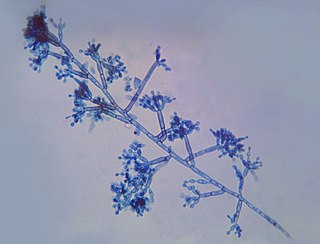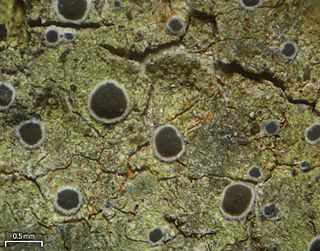
The Hypocreales are an order of fungi within the class Sordariomycetes. In 2008, it was estimated that it contained some 237 genera, and 2647 species in seven families. Since then, a considerable number of further taxa have been identified, including an additional family, the Stachybotryaceae. Wijayawardene et al. in 2020 added more families and genera to the order. According to the Catalog of Life, As of April 2021 the Hypocreales contains 6 families, 137 genera, and 1411 species. Hyde et al. (2020a) listed 14 families under Hypocreales, while, Wijayawardene et al. (2022) accepted 15 families in the order, where Cylindriaceae was additionally added. Earlier, Hyde et al. (2020a) had placed Cylindriaceae in class Xylariomycetidae. Samarakoon et al. (2022) agreed. Hence, Cylindriaceae should have been excluded from Hypocreales and placed in Xylariomycetidae. Xiao et al. (2022) recently introduced a new family Polycephalomycetaceae to Hypocreales.

The Chaetothyriales are an order of ascomycetous fungi in the class Eurotiomycetes and within the subclass Chaetothyriomycetidae. The order was circumscribed in 1987 by mycologist Margaret Elizabeth Barr-Bigelow.

The Botryosphaeriaceae are a family of sac fungi (Ascomycetes), which is the type representative of the order Botryosphaeriales. According to a 2008 estimate, the family contains 26 genera and over 1500 species. Members of this order include notable plant pathogens.

The Arthoniales is the second largest order of mainly crustose lichens, but fruticose lichens are present as well. The order contains around 1500 species, while the largest order with lichenized fungi, the Lecanorales, contains more than 14000 species.

The Arthoniaceae are a family of lichenized, lichenicolous and saprobic fungi in the order Arthoniales. The Arthoniaceae is the largest family of Arthoniales, with around 800 species. Most species in Arthoniaceae belong in Arthonia which is the largest genus with 500 species. The second and third largest genus is Arthothelium with 80 species, and Cryptothecia with 60 species.

The Pannariaceae are a family of lichens in the order Peltigerales. Species from this family have a widespread distribution, but are especially prevalent in southern temperate regions.

The Pilocarpaceae are a family of crustose lichens in the order Lecanorales. The species of this family have a cosmopolitan distribution and have been found in a variety of climatic regions. Pilocarpaceae was circumscribed by Alexander Zahlbruckner in Adolf Engler's influential 1905 work Die Natürlichen Pflanzenfamilien.

The Psoraceae are a family of lichenized fungi in the order Lecanorales. The Austrian Botanist and Lichenologist Alexander Zahlbruckner first described the family in 1898. Species of this family have a widespread distribution.

The Acarosporaceae are a family of fungi in the order Acarosporales. Members of this family have a widespread distribution, and are mostly lichenized with green algae. According to a 2021 estimate, the family contains 11 genera and about 260 species. The family is characterised by a hamathecium formed of paraphysoids.

The Ostropales are an order of fungi in the class Lecanoromycetes. The order was circumscribed by Swedish botanist John Axel Nannfeldt in 1932. The order contains 4 families and 46 genera, including 6 genera of uncertain familial placement.
The Odontotremataceae are a family of fungi in the monotypic order of Odontotrematales. Species of this family have a widespread distribution, but are especially known from northern temperate areas.

The Coccotremataceae are a family of lichen-forming fungi in the order Pertusariales. Species in this widely distributed family grow on bark or rocks, especially in maritime regions.
The Halosphaeriaceae are a family of fungi in the Sordariomycetes class, subclass Hypocreomycetidae. Halosphaeriaceae is the family with the largest number of marine fungi with a few species are from freshwater and terrestrial habitats.

Herpotrichiellaceae is a family of ascomycetous fungi within the order Chaetothyriales and within the class Eurotiomycetes. It contains 16 genera and about 270 species. The type genus of the family, Herpotrichiella, is now synonymous with Capronia.

The Trypetheliaceae are a family of mainly lichen-forming fungi in the order Trypetheliales. The family consists almost exclusively of corticolous (bark-dwelling), crustose lichens with an almost strictly tropical distribution.
The Schizothyriaceae are a family of fungi of uncertain ordinal placement in the class Dothideomycetes. It comprises 10 genera and around 70 species.
The Asterinaceae are a family of fungi in the class Asterinales.

Caliciales is an order of mostly lichenized fungi in the class Lecanoromycetes. It consists of two families: Caliciaceae and Physciaceae, which together contain 54 genera and more than 1200 species. The order was circumscribed by American botanist Charles Edwin Bessey in 1907.

Opegraphaceae is a family of lichen-forming and lichenicolous fungi in the order Arthoniales. It was originally proposed by German lichenologist Ernst Stizenberger in 1862. It fell into disuse, but was resurrected in a molecular phylogenetic study of the order Arthoniales published in 2010. It now includes taxa that were previously referred to the family Roccellaceae, its sister group.

Strigulales is an order of lichen-forming fungi in the class Dothideomycetes. It contains two families: Strigulaceae and Tenuitholiascaceae, with a combined total of 115 species. The order was proposed by Robert Lücking, Matthew Nelsen, and Kevin Hyde in 2013. Most species in the order are foliicolous, that is, they grow on plant leaves.
















